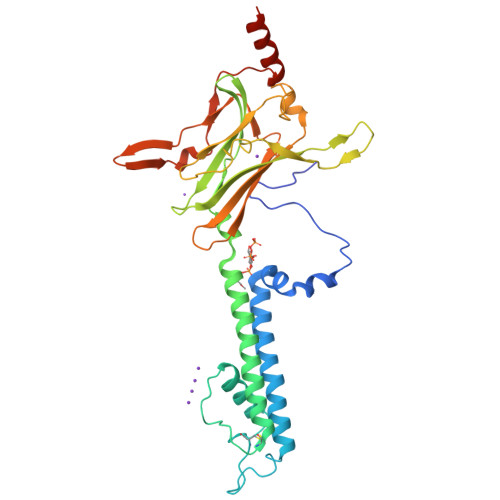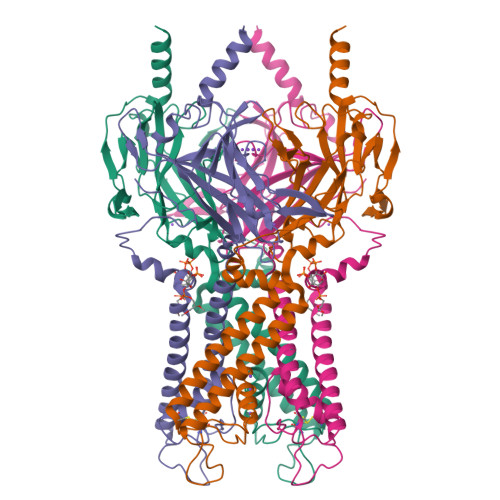Crystal Structure of the Mammalian GIRK2 K(+) Channel and Gating Regulation by G Proteins, PIP(2), and Sodium.
Whorton, M.R., Mackinnon, R.(2011) Cell 147: 199-208
- PubMed: 21962516
- DOI: https://doi.org/10.1016/j.cell.2011.07.046
- Primary Citation of Related Structures:
3SYA, 3SYC, 3SYO, 3SYP, 3SYQ - PubMed Abstract:
G protein-gated K(+) channels (Kir3.1-Kir3.4) control electrical excitability in many different cells. Among their functions relevant to human physiology and disease, they regulate the heart rate and govern a wide range of neuronal activities. Here, we present the first crystal structures of a G protein-gated K(+) channel. By comparing the wild-type structure to that of a constitutively active mutant, we identify a global conformational change through which G proteins could open a G loop gate in the cytoplasmic domain. The structures of both channels in the absence and presence of PIP(2) suggest that G proteins open only the G loop gate in the absence of PIP(2), but in the presence of PIP(2) the G loop gate and a second inner helix gate become coupled, so that both gates open. We also identify a strategically located Na(+) ion-binding site, which would allow intracellular Na(+) to modulate GIRK channel activity. These data provide a structural basis for understanding multiligand regulation of GIRK channel gating.
Organizational Affiliation:
Laboratory of Molecular Neurobiology and Biophysics, Rockefeller University, New York, NY 10065, USA.





















